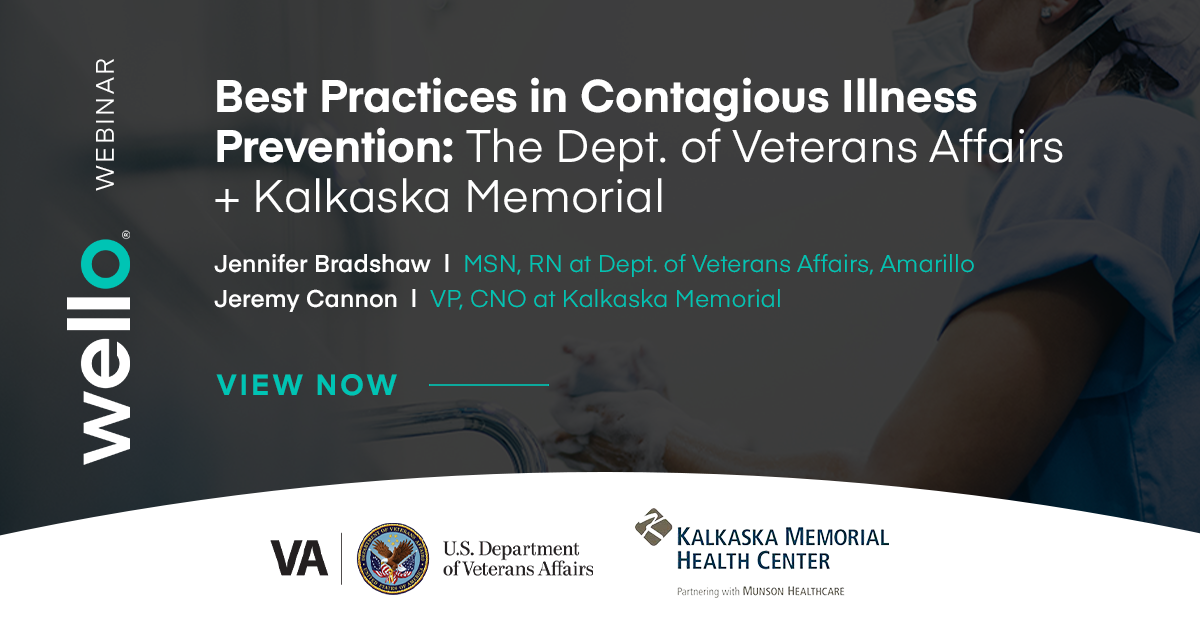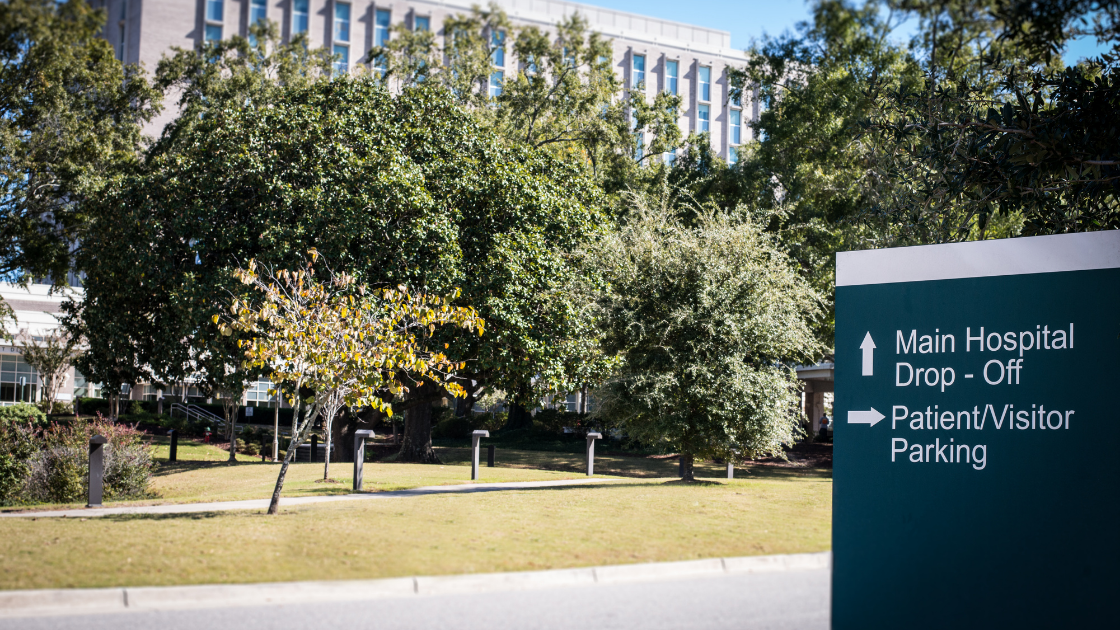A Conversation with the Department of Veterans Affairs & Kalkaska Memorial
When Covid-19 reached the United States in the early spring of 2020, healthcare facilities across the globe were thrown into instant uncertainty. In such an unprecedented situation, medical professionals worked tirelessly through the unknown, having to accommodate new challenges each time they arose.
Every organization aimed to adapt their facilities in a way that was both safe and effective for providers and patients alike, learning what worked and what didn’t along the way. But with the passage of time and consistent trial and error, many organizations have been able to reflect on infection control strategies.
In a recent webinar, Wello’s COO Lauren Berk sat down with Wello clients: Jennifer Bradshaw, MSN, RN at the Thomas E. Creek VA Medical Center in Amarillo, Texas, and Jeremy Cannon, Chief Nursing Officer at Kalkaska Memorial in Northern Michigan, to discuss their facilities’ responses to Covid-19.
Both Bradshaw and Cannon share what they’ve uncovered while reflecting on their own organizations’ infection control responses, and how they plan to carry their findings into the next stages of this ongoing battle.
Initial Covid-19 response and results
When the pandemic first began, both Thomas E. Creek VA Center and Kalkaska Memorial took many of the basic precautions set forth by state and federal guidelines. This included limiting the number of entry points for both patients and staff, and creating a 24-hour screening schedule to monitor anyone entering the facilities.
To implement these strategies, both organizations pivoted their existing staff members into newly developed screening roles. The VA relied on departments that had shut down due to Covid-19 restrictions, such as elective surgery personnel, while Kalkaska took on a wider approach, creating a 24-hour revolving schedule with employees from various departments.
In each scenario, existing staff members pulled together to accomplish what needed to be done, despite the constantly changing rules and regulations. “Things might be one way at 7 o’clock in the morning, and by 7 PM they were completely different,” said Cannon. “But whatever the recommendation was, we turned around and made it happen.”
As time went on and the pandemic progressed, so did the needs of each facility. Although necessary, manual screening processes often lead to extensive waiting periods. Thermometers were also difficult to find during peak Covid-19 surges, forcing providers to resort to alternate measures such as temperature strips and thermo scanners.
The VA had a particularly difficult time trying to implement temperature strips. “It was kind of our last ditch effort, considering we couldn’t get any kind of thermometers or anything during the pandemic,” said Bradshaw, when asked about some of the VA’s less effective Covid-19 strategies.
“You couldn’t read them, and they caused people to have to get too close to other people to even try to read them.”
On the other hand, Kalkaska Memorial – located in Northern Michigan – had extreme temperatures, leading to misreads on thermometers and the inability to screen outside during the winter months. While these initial systems had worked to satisfy the basic need, they were not sustainable in the long run.
Introduction of welloStationX
As time progressed, both the VA Center and Kalkaska Memorial were able to learn from and build upon their infection control strategies. Both facilities had one process in common that could be streamlined: manual screening.
This is when the convenience of an FDA-cleared touchless temperature check station truly became invaluable. After careful consideration, each campus decided to try out welloStationX.
With non-contact screening kiosks now in place, the screening process became a lot smoother. Before taking someone’s temperature, each welloStationX can be set to provide an on-screen or touchless mobile health questionnaire.
By combining these two requirements into one personless process, an employee or patient can be screened and badged quickly, bypassing long lines and the need for human screeners altogether. With this system in play, the screening process was accurate, reliable, and cost-effective.
Most importantly, the success of the automated process can be trusted to last far beyond the days of the pandemic. This newfound efficiency has both streamlined the process for patients and allowed staff members to return to their original duties.
“When we looked at the Wello machine, or utilizing a new piece of technology and making that kind of investment, we were thinking past the pandemic,” shared Cannon, as he reflected on what welloStationX machines could do for long-term care facilities.
“You’re entrusted to care for 104 different individuals who all have 104 loved ones and change that come into a facility to see them … by using this technology, we can ensure that everybody who comes into the facility has kind of checked all the same boxes that we would for all of our employees.”
WelloStationX users also have peace of mind knowing that screener questions can be updated amongst machines whenever necessary, whether that be an adaptation for the flu season, or any other medical crisis that may arise in the future.
With an FDA clearance, welloStationX machines can be trusted long after the days of a pandemic-fueled worry, as temperature taking and wellness screening is likely here to stay.
“I don’t foresee this going away any time soon,” Bradshaw said when discussing future prevention measures. “I can see screening questions still staying in health care, as well as temperature taking.”
No matter the state of infection control, patients, families and healthcare providers will always continue to have the same goal: keeping those in healthcare facilities happy, healthy and most importantly, safe. To view the webinar, click the link below.


